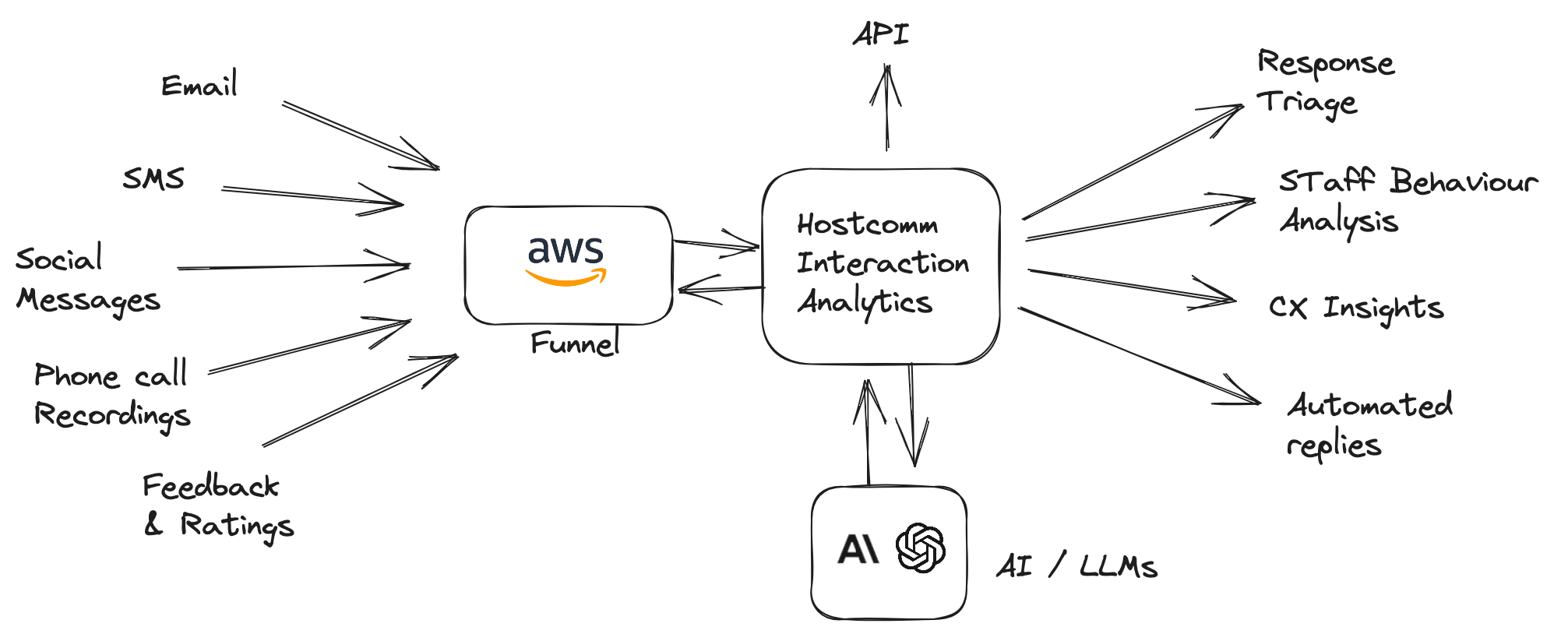Introduction
In a world where new and advanced communication channels emerge regularly, email, the old stalwart, holds an undeniable sway. With 4.5 billion users globally as of 2023, email remains an omnipresent and vital communication tool. Its prevalence, ease of use, and universal acceptance ensure its continued role in both personal and business communication.
Despite its widespread use, email management, particularly in high-volume environments such as contact centres, has its own challenges. These include an overwhelming influx of emails, a lack of priority triage, and a need for swift yet appropriate responses. However, the dawn of AI-powered solutions is ushering in a much-needed resurgence in this space. AI Interaction Analytics brings the promise of managing and optimising emails effectively in contact centres, infusing them with enhanced prioritisation, intelligent triage, and automated responses.
AI & Email: The New Power Duo
Artificial Intelligence is no stranger to contact centres. AI has already made its mark in this sphere through intelligent chatbots, predictive analytics, and voice recognition software. Now, this technology is making headway into revitalising the email communication channel, promising a strategic transformation that has the potential to revolutionise contact centre operations. Email is already in text format and has a good structure for AI to interpret, the sender, subject, main message and time information is easily understood by a large language model or Interaction Analytics system.
Priority & Triage: Cutting Through the Noise
One of the most significant challenges contact centres face is managing the deluge of emails that flood inboxes daily. Filtering, sorting, and assigning priority to these emails often require human labor and valuable time that could be better spent elsewhere.
AI has the power to significantly reduce this burden through automated email prioritisation and triage. AI models can analyse the content of incoming emails, classify them based on their urgency, and automatically prioritise them in the queue. This intelligent triage allows contact centres to tackle high-priority queries faster and more effectively, improving customer satisfaction and increasing operational efficiency.
For instance, emails regarding service disruptions or payment issues can be categorised as high priority and attended to immediately, while less pressing concerns can be addressed later. Such triage is not only efficient but can also contribute to the overall customer experience by ensuring that critical issues are resolved promptly.
Automated Responses: Swift and Accurate
AI's capability extends beyond mere sorting and prioritising. With the ability to analyse past and present data, AI can generate automatic responses to incoming emails, significantly reducing the turnaround time. This application can be particularly beneficial for common and repetitive queries, allowing customer service representatives to focus on complex issues that require a human touch.
Machine learning models can study previous interactions, understand the context, and generate appropriate responses. Natural Language Processing (NLP) techniques allow AI to comprehend human language and respond intelligently. This ability ensures that automatic responses do not feel robotic or out of context but engage customers in a personalised and human-like manner.
These AI-generated responses also learn from feedback, enhancing their accuracy and relevance over time. This continuous learning process results in a constantly improving system, providing an unmatched customer service experience.
The Resurgence of AI-Powered Email
The recent advancements in AI Interaction Analytics and AI contact centres have sparked a revival in the usage of email in contact centres. Despite the advent of social media and instant messaging platforms, email's ease of use, prevalence, and formality make it a preferred choice for many customers. And with AI's involvement, the shortcomings associated with email usage in contact centres are being systematically addressed and overcome.
AI-powered email offers a higher degree of personalisation and context-awareness that most other channels fail to deliver. By leveraging AI's predictive and analytical capabilities, contact centres can predict customer behavior, customise responses, and take proactive actions, leading to a higher level of customer satisfaction.
Moreover, AI's capabilities are not confined to the realms of priority and triage or automated responses. Sentiment analysis can gauge customer emotions, fostering empathy in interactions. AI can also analyse patterns and trends in customer emails to provide strategic insights, assisting in proactive decision-making.
Conclusion
AI-powered email is undoubtedly bringing a resurgence to how contact centres operate. The convergence of AI and email is creating a seamless, effective, and efficient communication channel that improves the customer service experience significantly. By enabling priority triage, facilitating automated responses, and providing strategic insights, AI is taking the contact centre industry to the next level.
While we continue to embrace new communication tools and platforms, the revitalisation of email through AI ensures its relevance in the fast-paced digital world. As AI continues to evolve, its applications in optimising and enhancing email communication in contact centres will become increasingly profound, driving us towards a future where the old and the new blend to create an unprecedented customer service experience.
FAQs
Q:How does it work?
A: Emails, other messages and voice transcripts are consumed by the Interaction Analytics or AI contact centre via API, synchronisation or forwarding. The messages are processed to remove PII data and other unnecessary text and then processed by a large language model to gain an understanding of the message contents. The language model then categorises or triages the message in order or priority. In the case of emails they can be acted on by a person or automatically via AI. This significantly improves the effectiveness of email communications and general customer satisfaction (CX).

Q: How does AI help in prioritising and triaging emails in contact centres?
A: AI analyses the content of incoming emails in contact centres and classifies them based on their urgency. By prioritising high-urgency emails, AI ensures that critical queries are addressed immediately, thereby enhancing customer satisfaction and operational efficiency.
Q: How does AI contribute to generating automatic responses in email communication?
A: AI, through machine learning and Natural Language Processing (NLP) techniques, analyses past interactions and understands the context to generate appropriate automatic responses to incoming emails. This reduces the turnaround time significantly and allows customer service representatives to focus on more complex issues.
Q: What does the resurgence of AI-powered email mean for contact centres?
A: The resurgence of AI-powered email is revolutionising the way contact centres operate. AI's integration with email offers greater personalisation and context-awareness, which can improve customer satisfaction significantly. The use of AI-powered email also enables predictive and proactive customer service, which many other channels fail to deliver.
Q: How does AI-powered email improve the overall customer experience?
A: AI-powered email improves the customer experience by ensuring prompt responses to high-priority queries, generating appropriate automatic responses, and customising interactions based on previous exchanges. AI can also gauge customer emotions through sentiment analysis, fostering more empathetic and personalised interactions.
Q: How does AI contribute to strategic decision-making in contact centres?
A: AI can analyse patterns and trends in customer emails, which provide strategic insights for the contact centre. These insights can help in proactive decision-making, such as predicting customer behavior and taking pre-emptive actions to enhance the customer experience.
Q: Are AI-generated responses truly effective and do they feel robotic?
A: AI-generated responses, thanks to advancements in machine learning and Natural Language Processing (NLP), are designed to understand human language and respond intelligently. They are capable of providing personalised and contextually appropriate responses that feel less robotic and more human-like. Moreover, they are designed to learn from feedback, improving their accuracy and relevance over time.
Further information
Hostcomm Interaction Analytics - How does it work?
To speak to a sales advisor on Interaction Analytics email [email protected]














